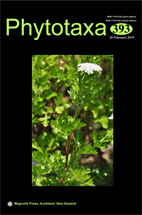Type: Article
Published: 2019-02-20
Page range: 35–46
Abstract views: 16
PDF downloaded: 1
First Report and New Freshwater Species of Germainiella (Bacillariophyta) from the Maolan Nature Reserve, Guizhou Province, China
Museum of Natural History and Department of Ecology and Evolutionary Biology, University of Colorado, Boulder, CO, USA
University of Michigan Biological Station, Pellston, MI, USA
College of Life and Environmental Sciences, Shanghai Normal University, Shanghai, China
College of Life and Environmental Sciences, Shanghai Normal University, Shanghai, China
College of Life and Environmental Sciences, Shanghai Normal University, Shanghai, China
University of Michigan Biological Station, Pellston, MI, USA
Department of Biological Sciences, Bowling Green State University, Bowling Green, OH, USA
College of Life and Environmental Sciences, Shanghai Normal University, Shanghai, China
Algae
Germainiella
Fallacia
China
Maolan Nature Reserve
SEM
diatoms

